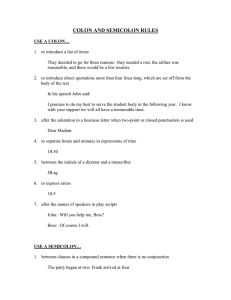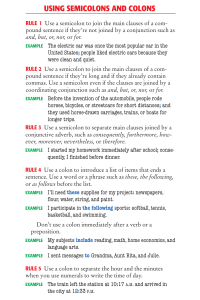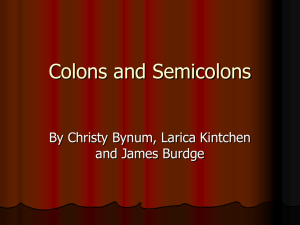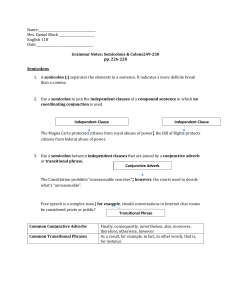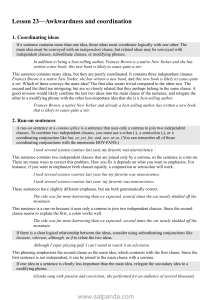Semicolon Rules
advertisement
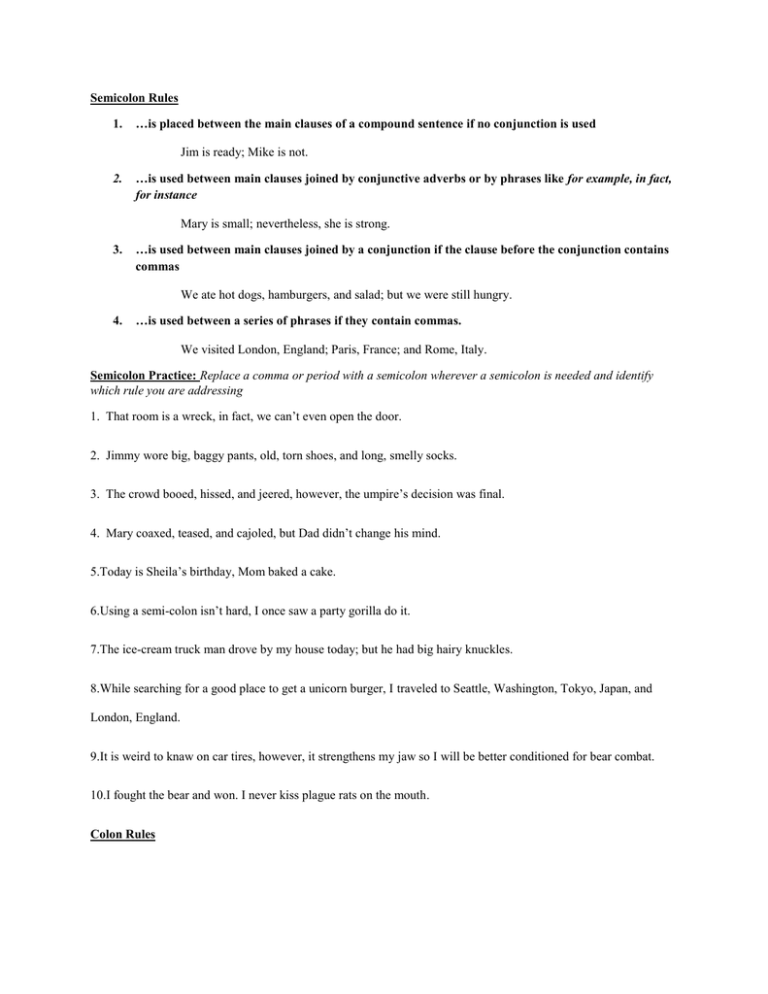
Semicolon Rules 1. …is placed between the main clauses of a compound sentence if no conjunction is used Jim is ready; Mike is not. 2. …is used between main clauses joined by conjunctive adverbs or by phrases like for example, in fact, for instance Mary is small; nevertheless, she is strong. 3. …is used between main clauses joined by a conjunction if the clause before the conjunction contains commas We ate hot dogs, hamburgers, and salad; but we were still hungry. 4. …is used between a series of phrases if they contain commas. We visited London, England; Paris, France; and Rome, Italy. Semicolon Practice: Replace a comma or period with a semicolon wherever a semicolon is needed and identify which rule you are addressing 1. That room is a wreck, in fact, we can’t even open the door. 2. Jimmy wore big, baggy pants, old, torn shoes, and long, smelly socks. 3. The crowd booed, hissed, and jeered, however, the umpire’s decision was final. 4. Mary coaxed, teased, and cajoled, but Dad didn’t change his mind. 5.Today is Sheila’s birthday, Mom baked a cake. 6.Using a semi-colon isn’t hard, I once saw a party gorilla do it. 7.The ice-cream truck man drove by my house today; but he had big hairy knuckles. 8.While searching for a good place to get a unicorn burger, I traveled to Seattle, Washington, Tokyo, Japan, and London, England. 9.It is weird to knaw on car tires, however, it strengthens my jaw so I will be better conditioned for bear combat. 10.I fought the bear and won. I never kiss plague rats on the mouth. Colon Rules Use a colon before listed items that are introduced by such words as the following, as follows, thus, and these; by a number; or by any other expression that "points-out." Example: In high school he played the following sports: baseball, basketball, football and tennis. A colon should not hinder the natural flow of the sentence and never follows a verb. Example: We will need flour, milk, and sugar. 1. You need these guys Will, Boyd, Jeff, and Jim. 2. She had three personality flaws pride, selfishness, and a temper. 3. The singers will be you, Pam, and Becky. 4. For the campout we will need the following things a tent, three sleeping bags, and a gas lantern. 5. Next semester I will be taking four courses Algebra II, English Literature, American History, and Biology III. 2. Use a colon to separate two complete sentences when the second sentence explains, amplifies, or illustrates the first. Example: Jim had a good idea: He wanted to consult with the builder. ***Do not capitalize the second sentence unless more than one sentence follows. 1. There has been no change in our plans we will leave at 1000 P.M. 2. He stated his plans he would borrow money; he would secure a plane; he would fly around the world. 3. That morning the people saw the problem during the night a tree had downed the power lines. 4. Now the men knew what to do the pressure would be increased in the forward compartment. 5. They were worried about Fred He would fall asleep at work and spend too much time alone.

